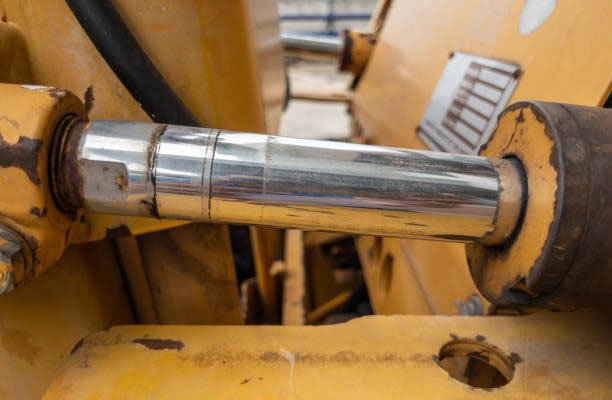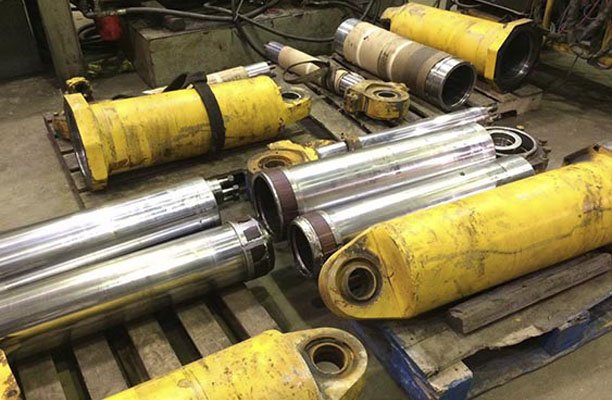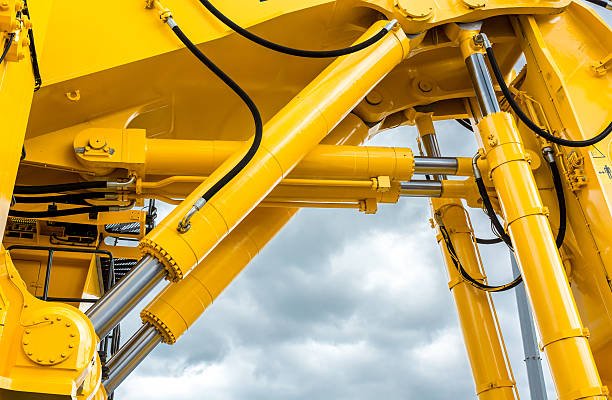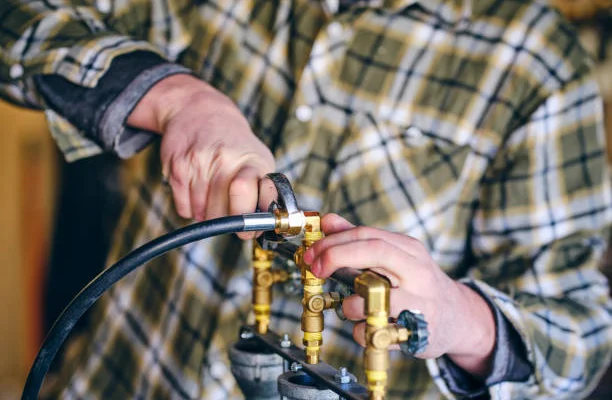Introduction to Hydraulic Cylinder Repair
Hydraulic cylinders are the powerhouse components behind countless machines in construction, manufacturing, agriculture, and transportation. When they fail, productivity comes to a grinding halt—and repair costs can skyrocket. Hydraulic cylinder repair isn’t just about fixing leaks; it’s about restoring efficiency, extending lifespan, and preventing costly downtime.
Whether you’re a seasoned mechanic or a hands-on equipment owner, knowing the ins and outs of hydraulic repair can save you thousands of dollars and countless headaches.
Understanding Hydraulic Cylinders and Their Importance
A hydraulic cylinder converts hydraulic energy into linear motion, allowing machines to lift, push, pull, and hold heavy loads with precision. From excavators digging into tough soil to forklifts lifting pallets, these cylinders are essential in both mobile and stationary equipment.
Common Applications in Industrial and Mobile Equipment

- Construction equipment – excavators, bulldozers, loaders
- Agricultural machinery – tractors, harvesters, balers
- Industrial machines – presses, injection molding machines
- Transportation – garbage trucks, cranes, tow trucks
Signs Your Hydraulic Cylinder Needs Repair
Leaks and Loss of Hydraulic Fluid
Hydraulic fluid leaks are one of the most visible warning signs. A small leak can quickly escalate into a major problem, reducing cylinder pressure and efficiency.
Reduced Lifting Power or Sluggish Operation
If your machinery struggles to lift or move loads, the cylinder may be losing pressure due to worn seals or internal damage.
Unusual Noises or Jerky Movements
Grinding sounds or inconsistent movement often indicate internal component damage or contamination in the hydraulic fluid.
Common Causes of Hydraulic Cylinder Failure
Seal Wear and Tear
Seals naturally degrade over time due to friction, heat, and exposure to contaminants.
Rod Damage or Pitting
Scratches or corrosion on the piston rod can damage seals and cause fluid leaks.
Contaminated Hydraulic Fluid
Dirt, metal particles, or water in the hydraulic system can erode components and cause premature failure.
Overheating and Excessive Pressure
Consistently operating at high pressure or temperature shortens the life of hydraulic components.
Step-by-Step Hydraulic Cylinder Repair Process

Safety Precautions Before Repair
- Release system pressure before disassembly.
- Wear proper PPE (gloves, goggles, protective clothing).
- Secure the cylinder to prevent movement during work.
Disassembly and Inspection
- Remove the cylinder from the machine.
- Carefully disassemble, noting part positions for reassembly.
- Inspect the rod, seals, and bore for wear or damage.
Replacing Damaged Seals and Components
- Use proper seal kits recommended by the manufacturer.
- Replace any scored rods or worn bearings.
Reassembly and Testing
- Reassemble in reverse order of disassembly.
- Test under controlled load to ensure smooth operation.
Step-by-Step Hydraulic Cylinder Repair Process
Repairing a hydraulic cylinder requires both mechanical skill and strict safety procedures. The goal is to restore the cylinder to full operating condition without causing further damage.
1. Safety Precautions Before Repair
Working on hydraulic systems is inherently risky due to high pressures and heavy components. Before starting:
- Depressurize the system by shutting down the machine and bleeding off hydraulic pressure.
- Disconnect hydraulic lines carefully, as residual pressure can still release fluid suddenly.
- Wear PPE—safety goggles, gloves, and protective clothing are non-negotiable.
- Secure the work area by using stands or mounts to keep the cylinder stable.
2. Disassembly and Inspection
- Remove the cylinder from the machine, making note of hydraulic hose connections for reinstallation.
- Clamp the cylinder gently in a bench vise with protective jaw covers to avoid scratching.
- Remove the end cap or gland using the correct spanner wrench. Avoid improvised tools that could damage threads.
- Extract the piston, rod assembly, and seals for examination.
- Inspect for:
- Scored or bent rods
- Worn or torn seals
- Corrosion or pitting on metal surfaces
- Signs of heat damage such as discoloration
3. Replacing Damaged Seals and Components
Seals are the most commonly replaced components during hydraulic cylinder repair.
- Always use manufacturer-approved seal kits to ensure proper fit and material compatibility.
- Replace damaged rods or pistons with OEM (Original Equipment Manufacturer) parts to maintain performance.
- Lubricate new seals before installation to reduce friction during reassembly.
4. Reassembly and Testing
- Reinstall components in the reverse order of disassembly.
- Tighten all fittings to the torque specifications recommended by the manufacturer.
- Reattach the cylinder to the machine, reconnect hydraulic lines, and bleed air from the system.
- Test the cylinder under light loads before returning it to full operational duty.
Tools and Equipment Needed for Repair
Even the most experienced technician can’t perform a proper hydraulic repair without the right tools.
Essential Hand Tools
- Adjustable wrenches and combination spanners
- Screwdrivers (flathead and Phillips)
- Torque wrench for precise tightening
- Soft-faced hammer to avoid damaging surfaces
Specialized Hydraulic Tools
- Seal installation tools to prevent stretching or tearing
- Cylinder honing tools for resurfacing the bore
- Hydraulic test bench for performance verification after reassembly
- Bearing pullers for removing tightly fitted parts
Pro Tip: Investing in specialized tools may seem expensive initially, but it pays off by reducing repair time and preventing rework.
Preventive Maintenance for Hydraulic Cylinders
Preventive maintenance can dramatically extend the life of hydraulic cylinders and reduce repair frequency.
1. Regular Fluid Checks and Changes
- Use only clean, manufacturer-recommended hydraulic oil.
- Replace oil according to the service schedule or sooner if contamination is suspected.
- Keep fluid reservoirs sealed to prevent dirt and moisture ingress.
2. Proper Cylinder Storage
When not in use:
- Store cylinders in a clean, dry environment.
- Protect exposed rods with a light film of rust inhibitor.
- Keep ports sealed with protective caps.
3. Scheduled Professional Inspections
Even if your team handles routine maintenance, periodic inspections by a hydraulic specialist can detect early wear signs before they escalate into costly failures.
DIY vs. Professional Hydraulic Cylinder Repair
Hydraulic cylinder repair can be approached in two ways—handling it yourself or hiring a professional service. Each option has its benefits and limitations.
When DIY Makes Sense
If you have mechanical experience, the right tools, and access to technical manuals, you can often handle straightforward repairs such as:
- Replacing seals and gaskets
- Cleaning and re-lubricating components
- Performing basic fluid changes
DIY repair is also practical for remote job sites where professional services are not readily available. However, accuracy in reassembly and strict adherence to safety standards are essential to avoid costly mistakes.
Benefits of Hiring Professionals
Professional hydraulic repair services bring years of experience, precision tools, and diagnostic equipment. They can:
- Identify underlying issues that may not be obvious
- Provide warranty-backed repairs
- Ensure the cylinder meets OEM performance standards
For complex problems involving bent rods, cracked barrels, or precision honing, professionals are almost always the better choice.
Cost of Hydraulic Cylinder Repair
Repair costs can vary widely depending on the severity of the damage, the size of the cylinder, and the urgency of the repair.
Factors Affecting Repair Costs
- Extent of damage – Minor seal replacements may cost under $200, while severe rod or bore damage can run into the thousands.
- Cylinder size – Larger, heavy-duty cylinders require more labor and material.
- Parts availability – Custom or rare parts can increase costs due to special manufacturing.
- Labor rates – Professional shop rates vary by region.
Cost-Saving Maintenance Practices
- Regular inspections to catch problems early
- Proper storage when cylinders are not in use
- Using only high-quality hydraulic fluids to reduce wear
- Keeping dust caps in place to prevent contamination
Hydraulic Cylinder Rebuilding vs. Replacement
When a cylinder fails, you have to decide between rebuilding it or replacing it entirely. Both options have advantages depending on the situation.
Pros and Cons of Rebuilding
Pros:
- Usually more cost-effective than buying new
- Can restore performance to like-new condition
- Shorter lead times if parts are readily available
Cons:
- If major structural damage exists, rebuilding may only be a temporary fix
- Older cylinders may require frequent future repairs
When Replacement Is the Better Option
Replacement makes sense when:
- The cost of repair approaches or exceeds the cost of a new cylinder
- The barrel or rod is severely cracked or bent beyond tolerance
- You want to upgrade to a higher-performance or more durable design
In many industries, the decision comes down to balancing cost, downtime, and long-term reliability.
Safety Hazards to Avoid During Repair
Hydraulic systems operate under extreme pressure, and improper handling during repairs can lead to serious injury or equipment damage.
High-Pressure Fluid Injection
Hydraulic oil can be ejected at high velocity through tiny leaks, penetrating skin and causing severe tissue damage. Always depressurize the system before inspection or disassembly.
Heavy Lifting Risks
Cylinders can be extremely heavy, especially in industrial and construction machinery. Use hoists, cranes, or hydraulic lifts to move them safely, and never work underneath an unsupported cylinder.
Improper Tool Use
Using makeshift tools or forcing parts apart can lead to damaged components or accidents. Always use the correct spanners, seal picks, and protective equipment.
Fire Hazards
Hydraulic oil is flammable under certain conditions. Avoid open flames, sparks, or smoking near the repair area.
By following industry-standard safety practices, you protect both your team and your investment in the equipment.
Innovations in Hydraulic Cylinder Technology
Recent advancements in hydraulic cylinder design are improving durability, performance, and ease of maintenance.
Wear-Resistant Coatings
New coating technologies, such as ceramic and hard-chrome plating, increase resistance to corrosion and abrasion. This extends the life of piston rods and reduces the frequency of repairs.
Smart Sensors for Predictive Maintenance
Modern hydraulic systems can be fitted with sensors that monitor cylinder performance in real time. These sensors detect early signs of wear, seal leakage, or pressure loss, allowing maintenance teams to act before failure occurs.
Improved Seal Materials
Advancements in polymer science have led to seals that withstand higher temperatures, pressure fluctuations, and chemical exposure, significantly reducing seal-related downtime.
By investing in updated cylinder technology, businesses can reduce operating costs and improve overall equipment reliability.
Conclusion
Keeping hydraulic cylinders in top condition comes down to early problem detection, quality repairs, and consistent maintenance. Addressing leaks, worn seals, or damaged rods promptly prevents costly downtime. Regular fluid checks, clean storage, and periodic professional inspections can add years to a cylinder’s lifespan.
Whether you choose DIY repairs or hire professionals, the goal is the same—restore performance and reliability. With advancements like wear-resistant coatings and smart monitoring, maintaining hydraulic cylinders is now more efficient, helping your equipment stay productive and dependable.
FAQs
How often should hydraulic cylinders be serviced?
For most applications, a full inspection every 1,000–2,000 operating hours is recommended, though heavy-duty or harsh-environment use may require more frequent checks.
Can I repair a hydraulic cylinder without removing it from the machine?
Minor repairs, such as tightening fittings or replacing external seals, can sometimes be done in place. However, most internal repairs require full removal for proper disassembly and inspection.
What causes hydraulic cylinder seals to fail?
Common causes include contamination, excessive pressure, heat buildup, and physical wear from misaligned components.
Is it cheaper to rebuild or replace a hydraulic cylinder?
Rebuilding is usually cheaper if the main structural components are intact. Replacement is better for severely damaged or outdated cylinders.
How can I tell if a hydraulic cylinder is leaking internally?
Symptoms include reduced lifting capacity, uneven movement, or hydraulic fluid bypassing inside the cylinder, which can be confirmed through a pressure test.
What’s the average lifespan of a hydraulic cylinder?
With proper maintenance, a hydraulic cylinder can last anywhere from 5 to 15 years, depending on workload and environmental conditions.




